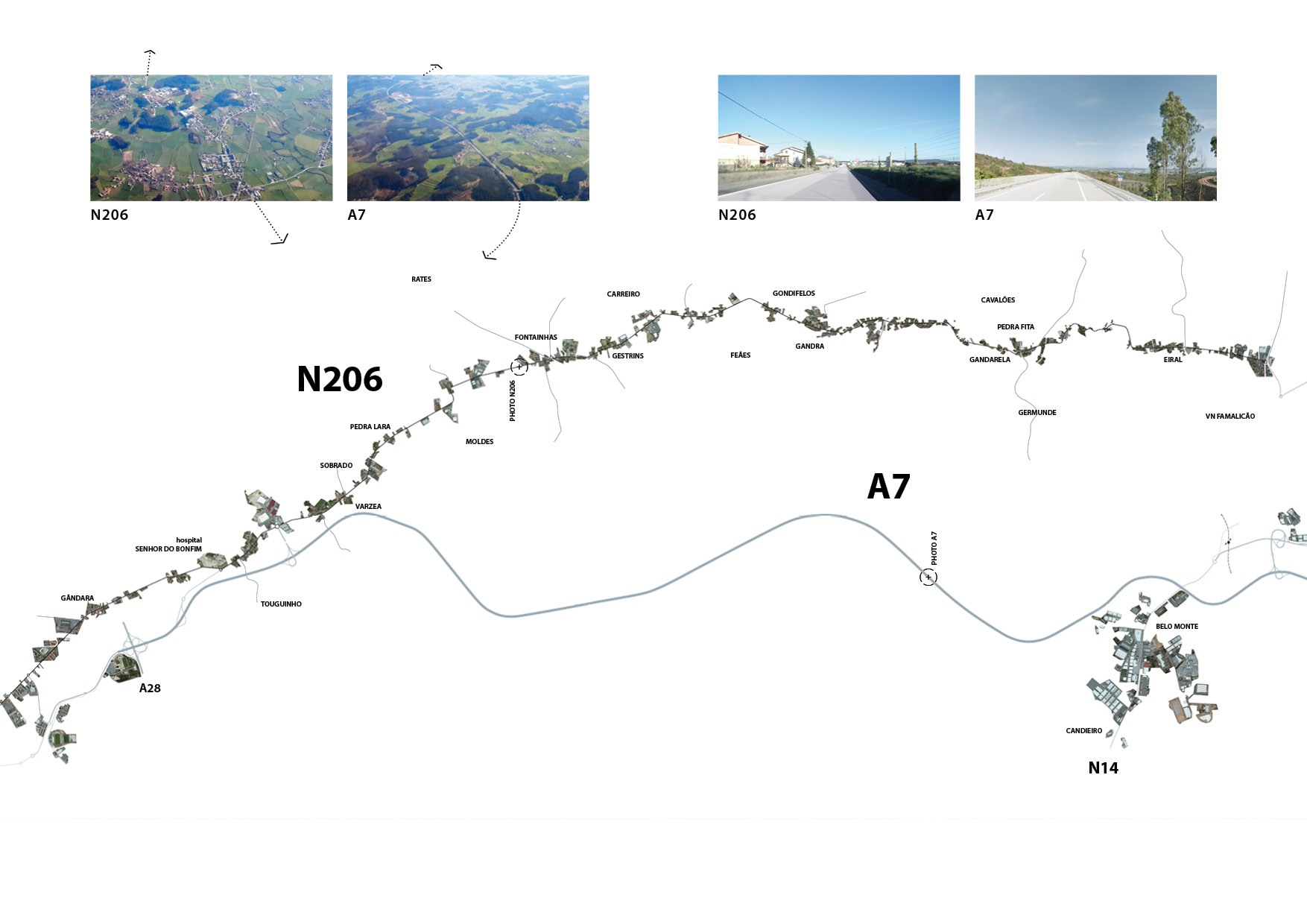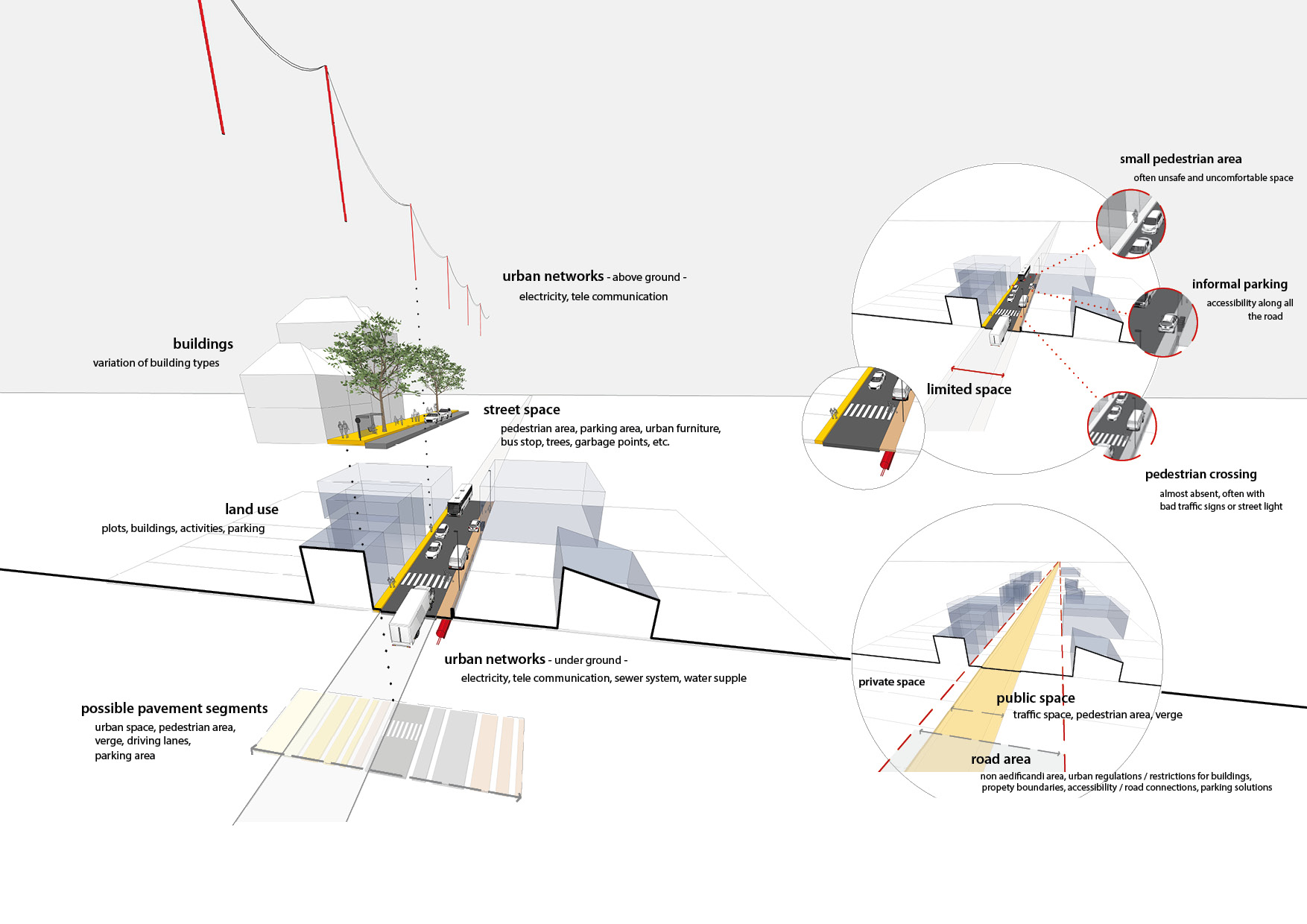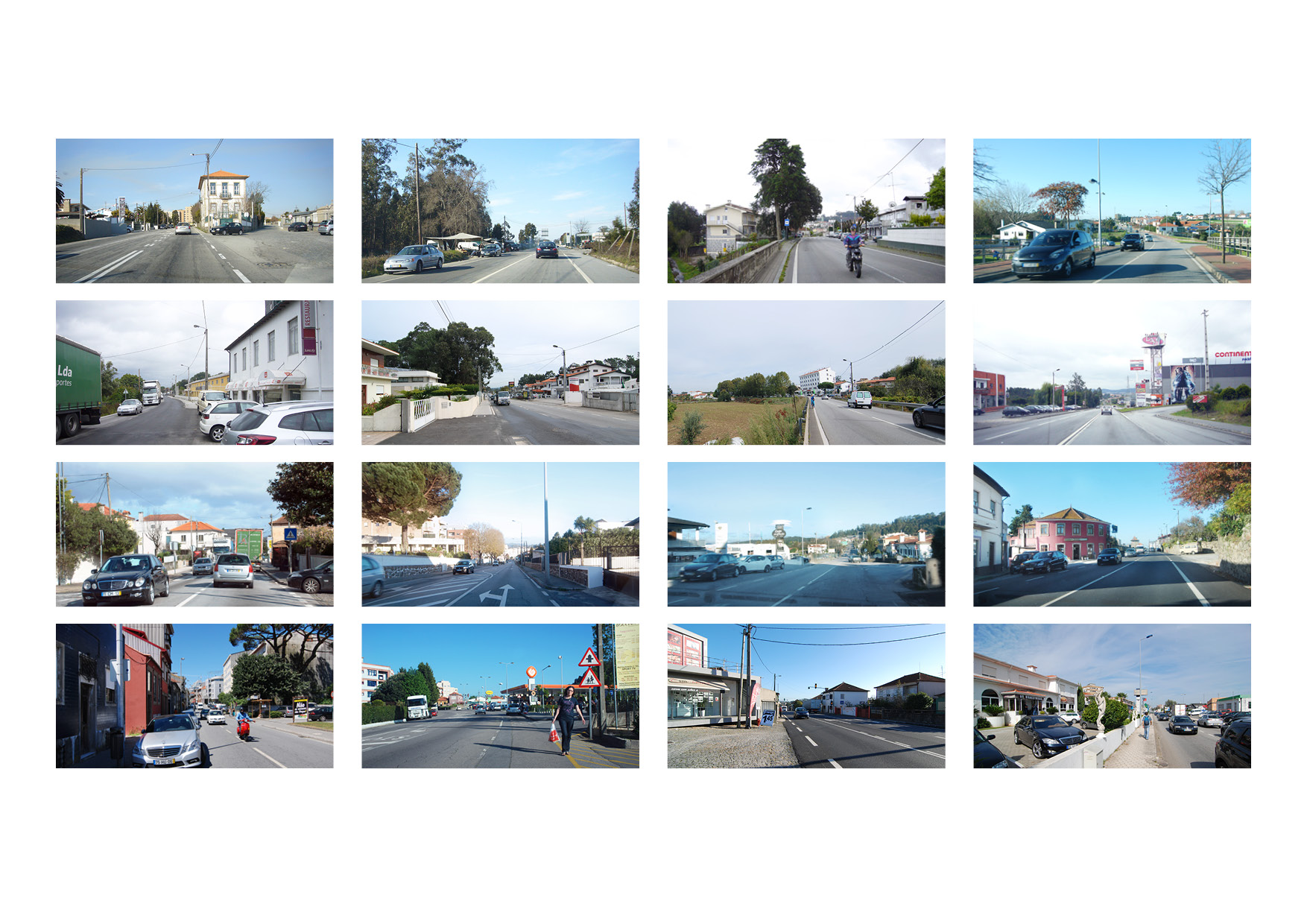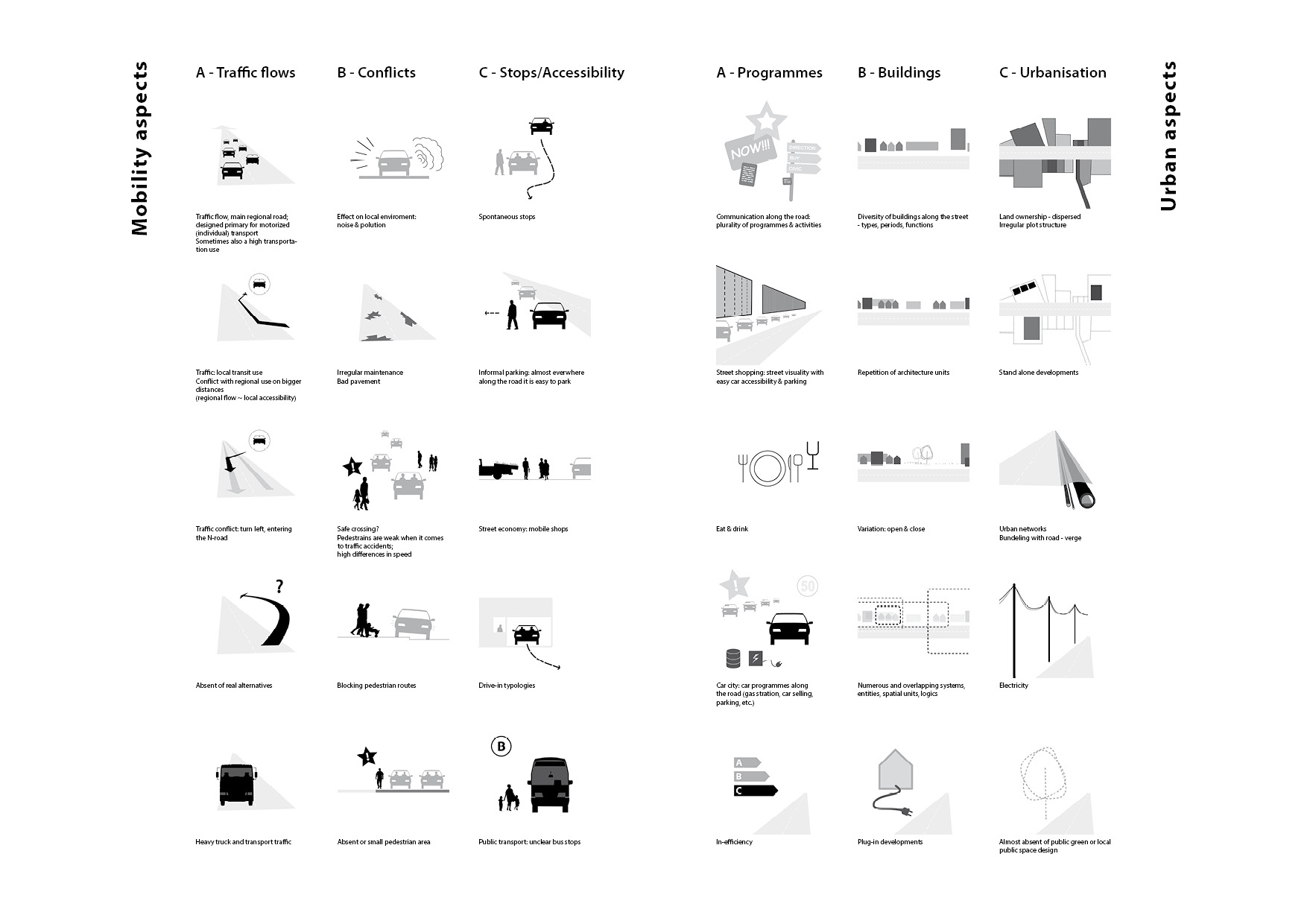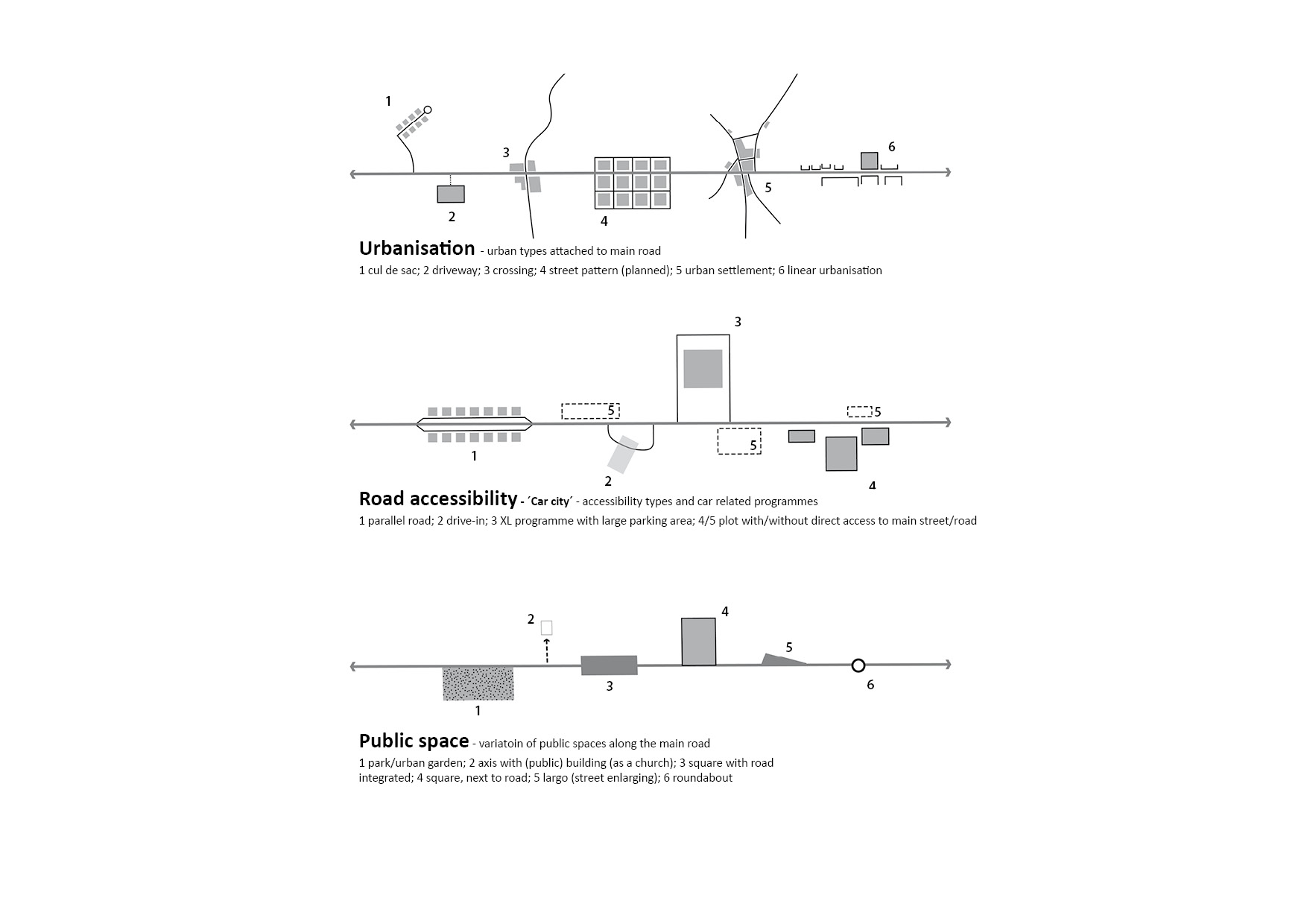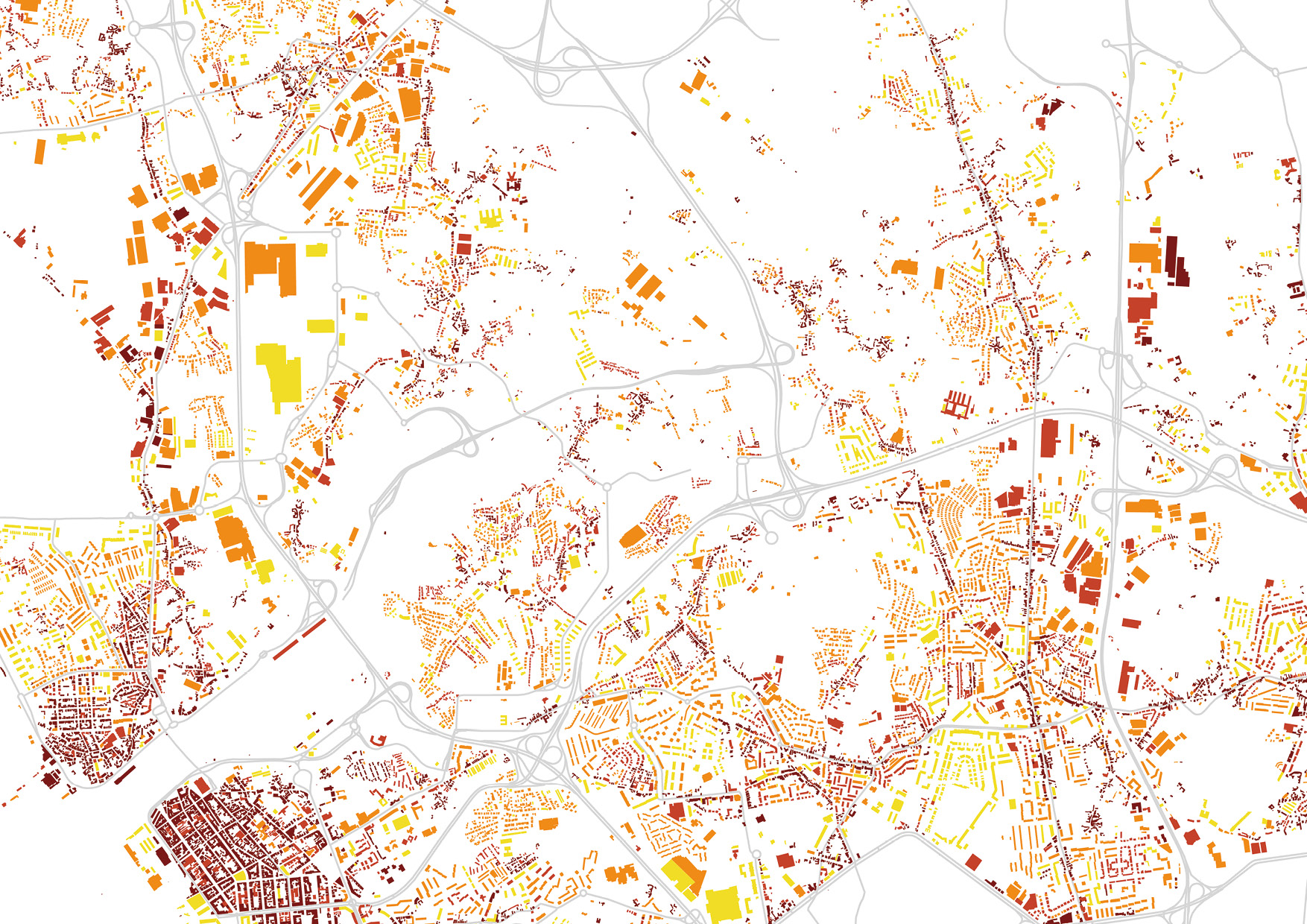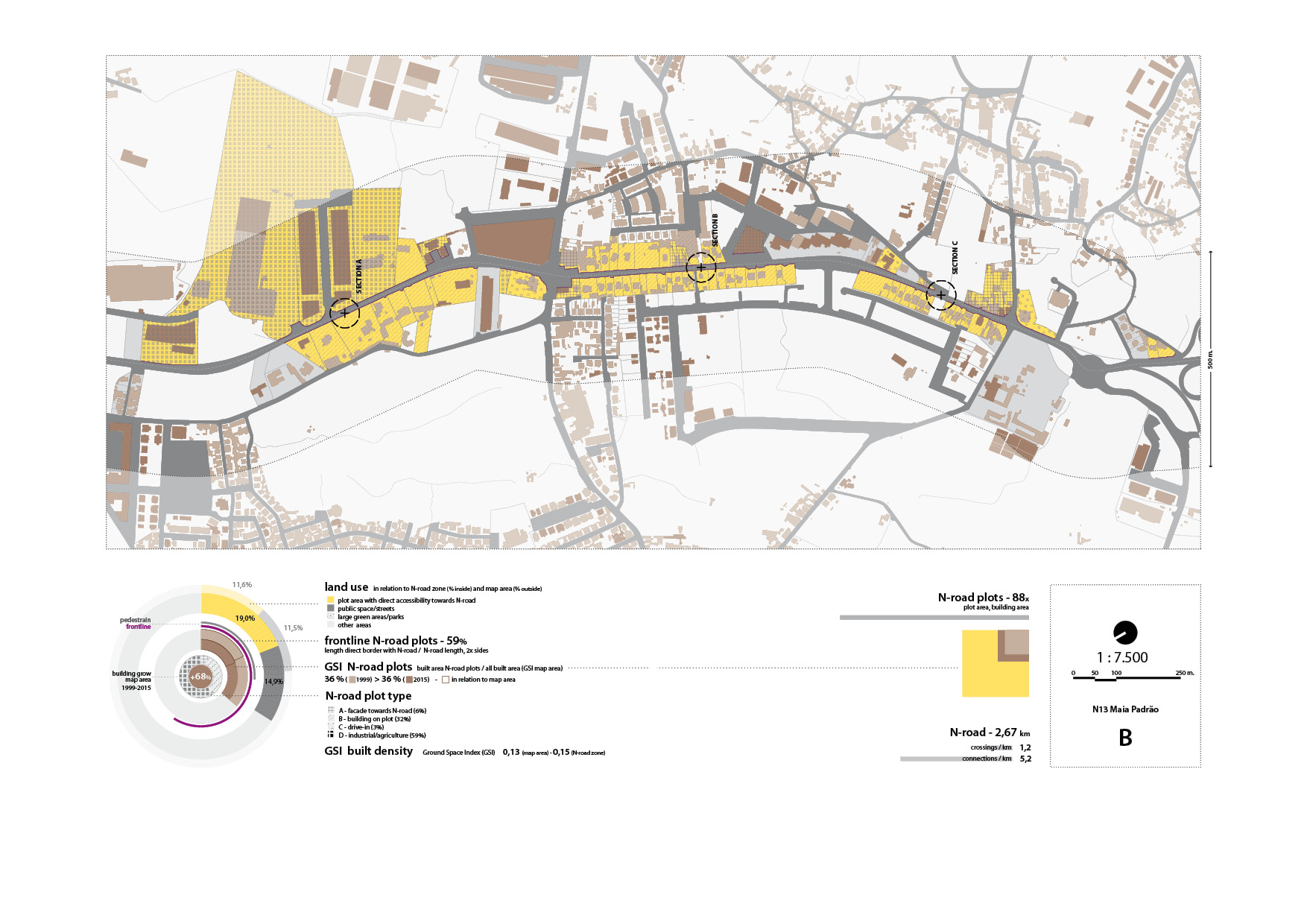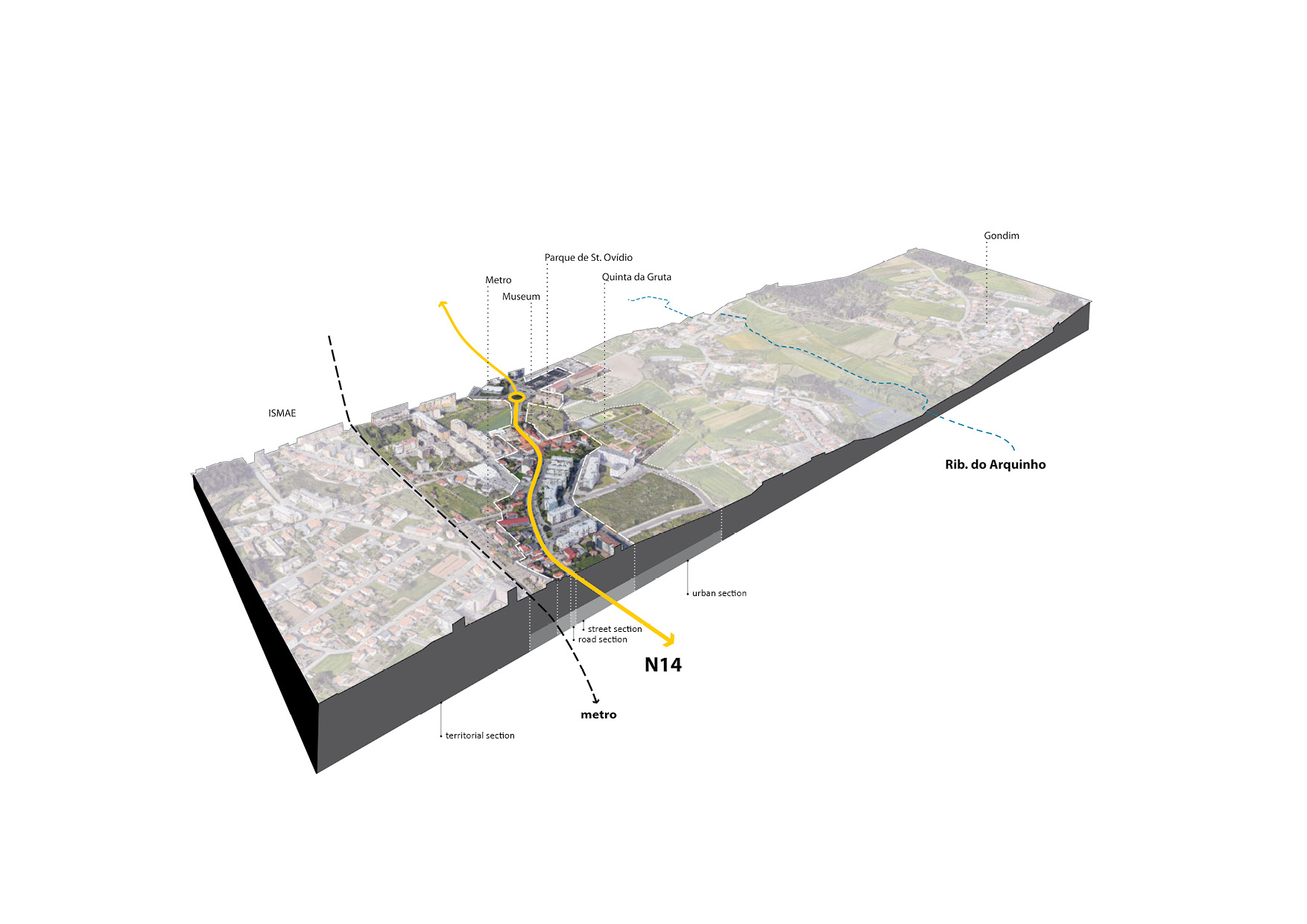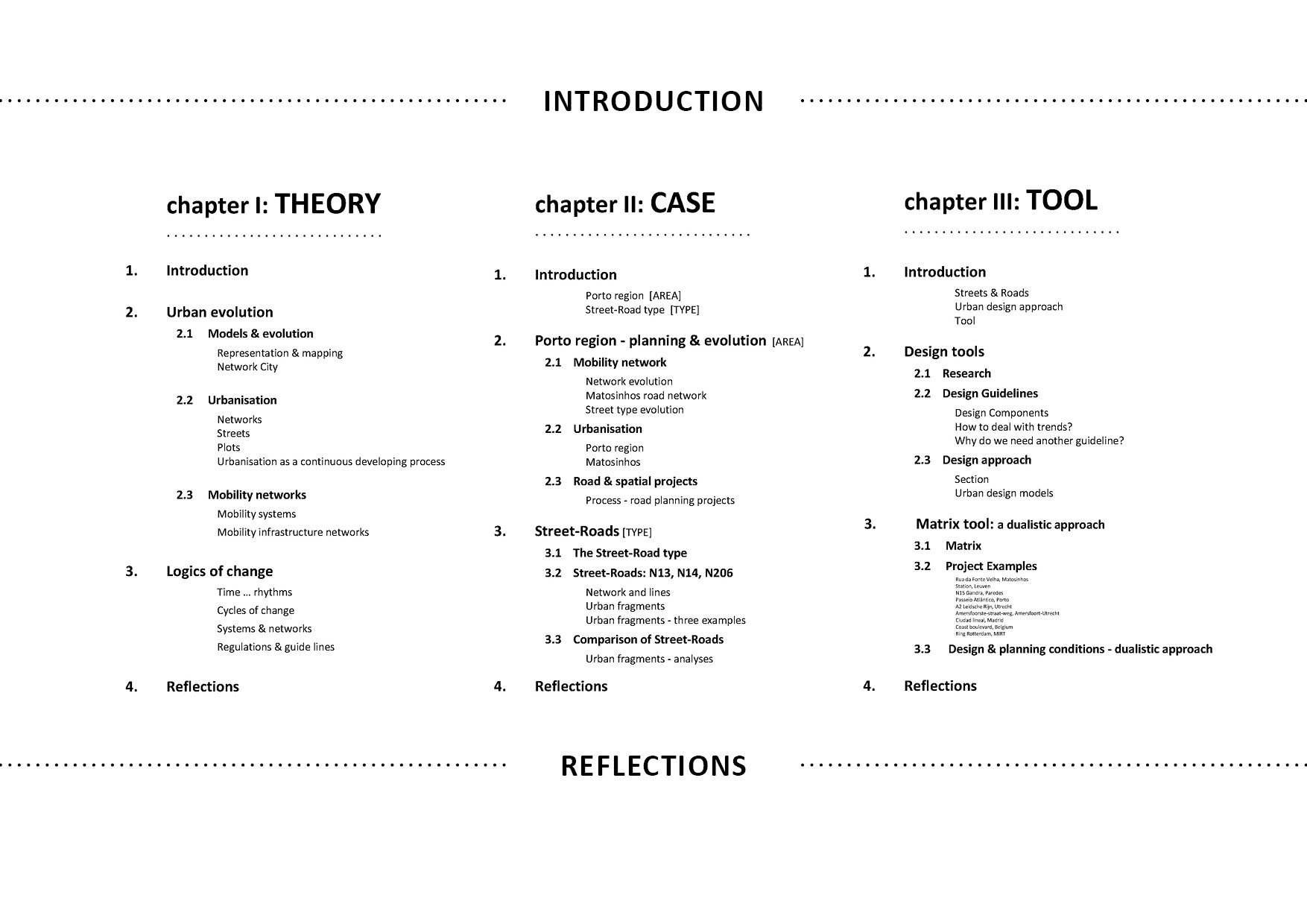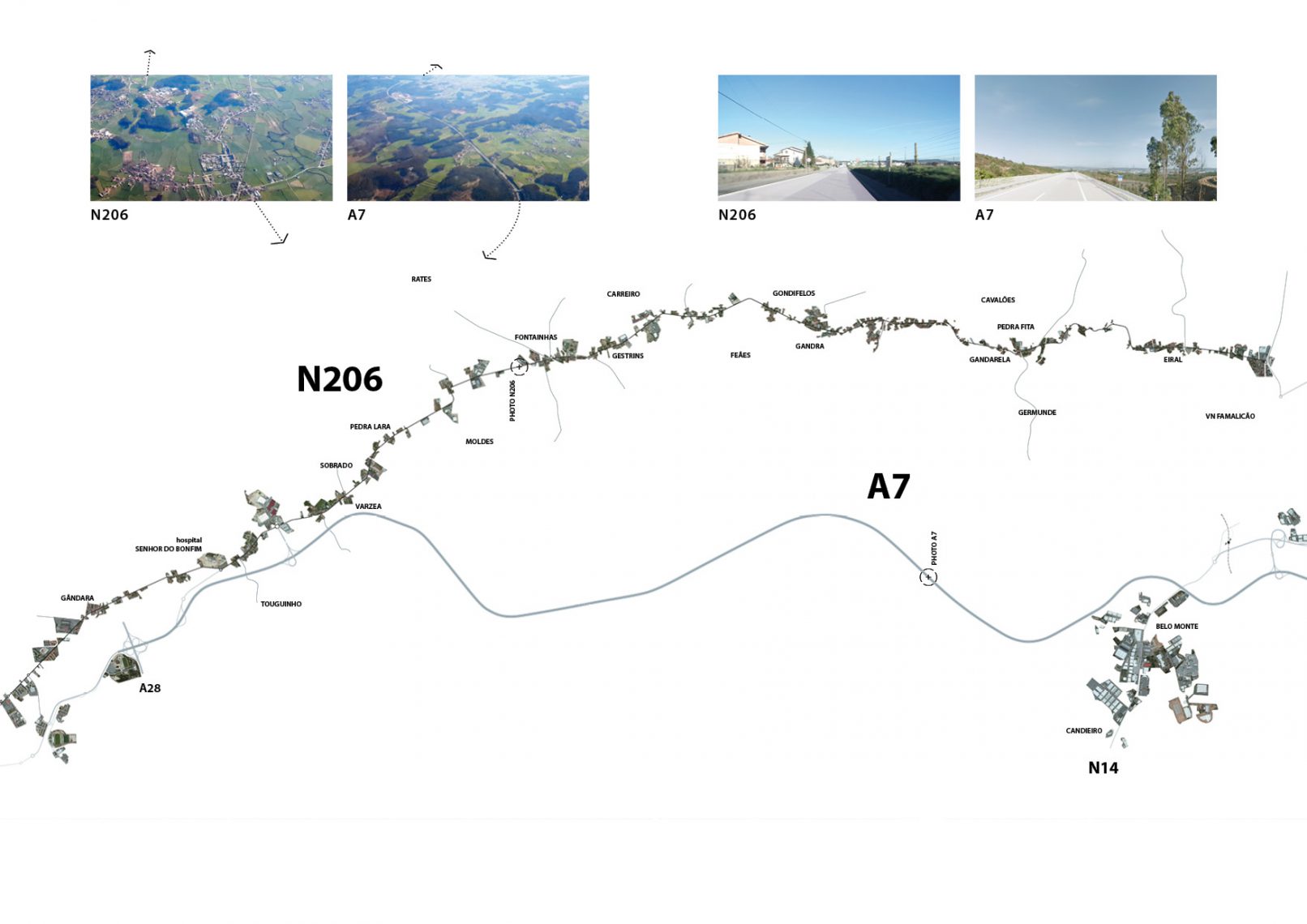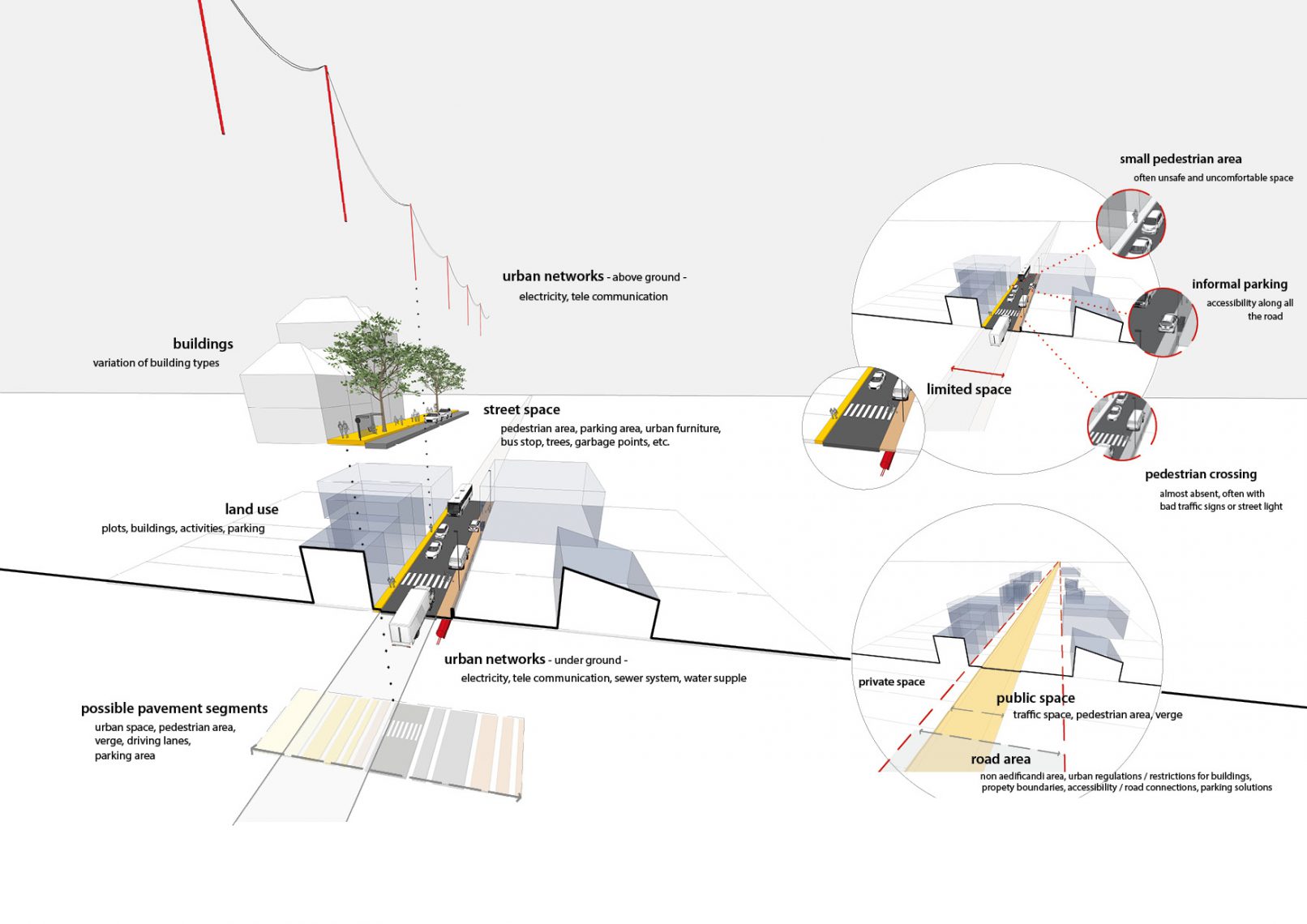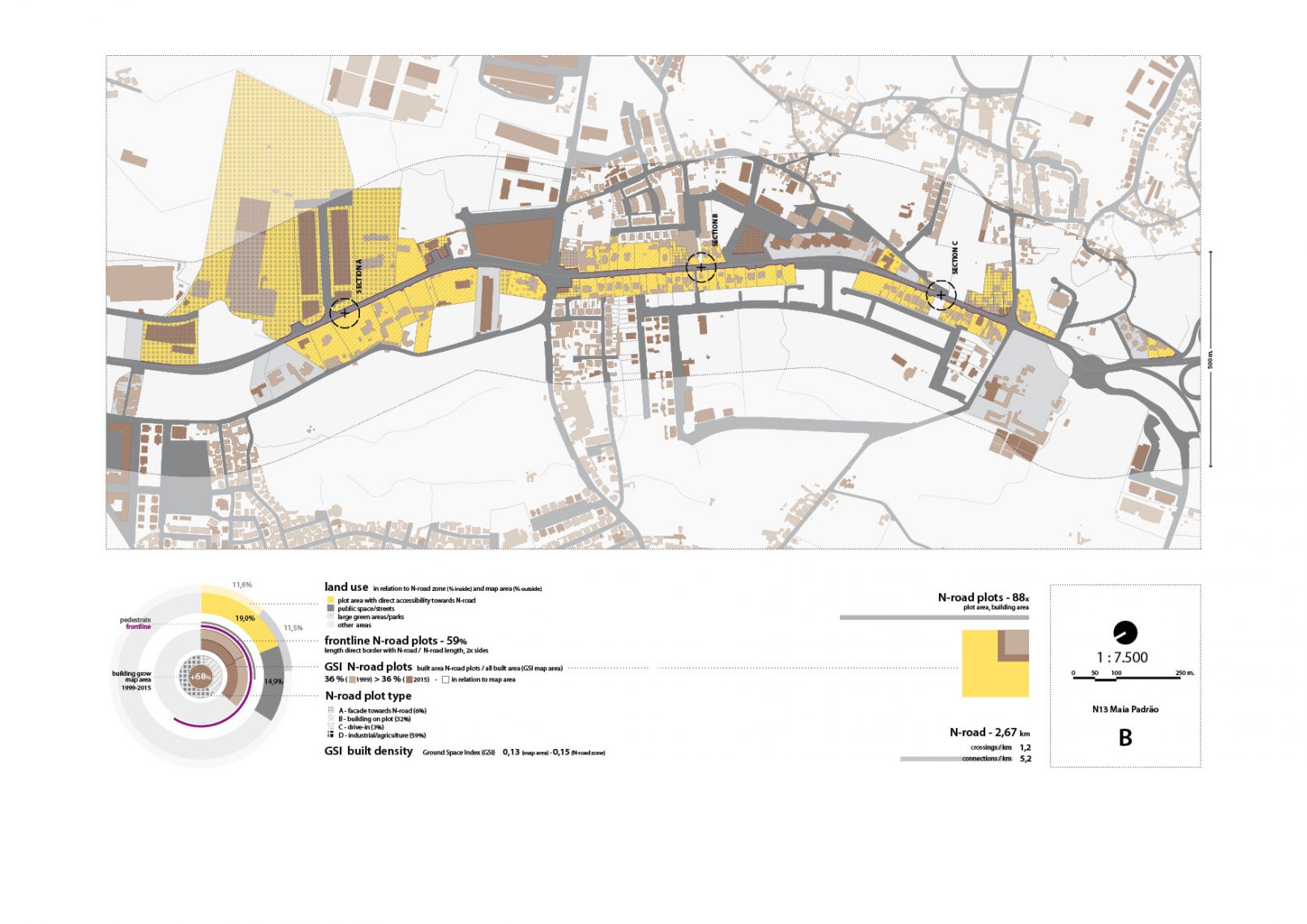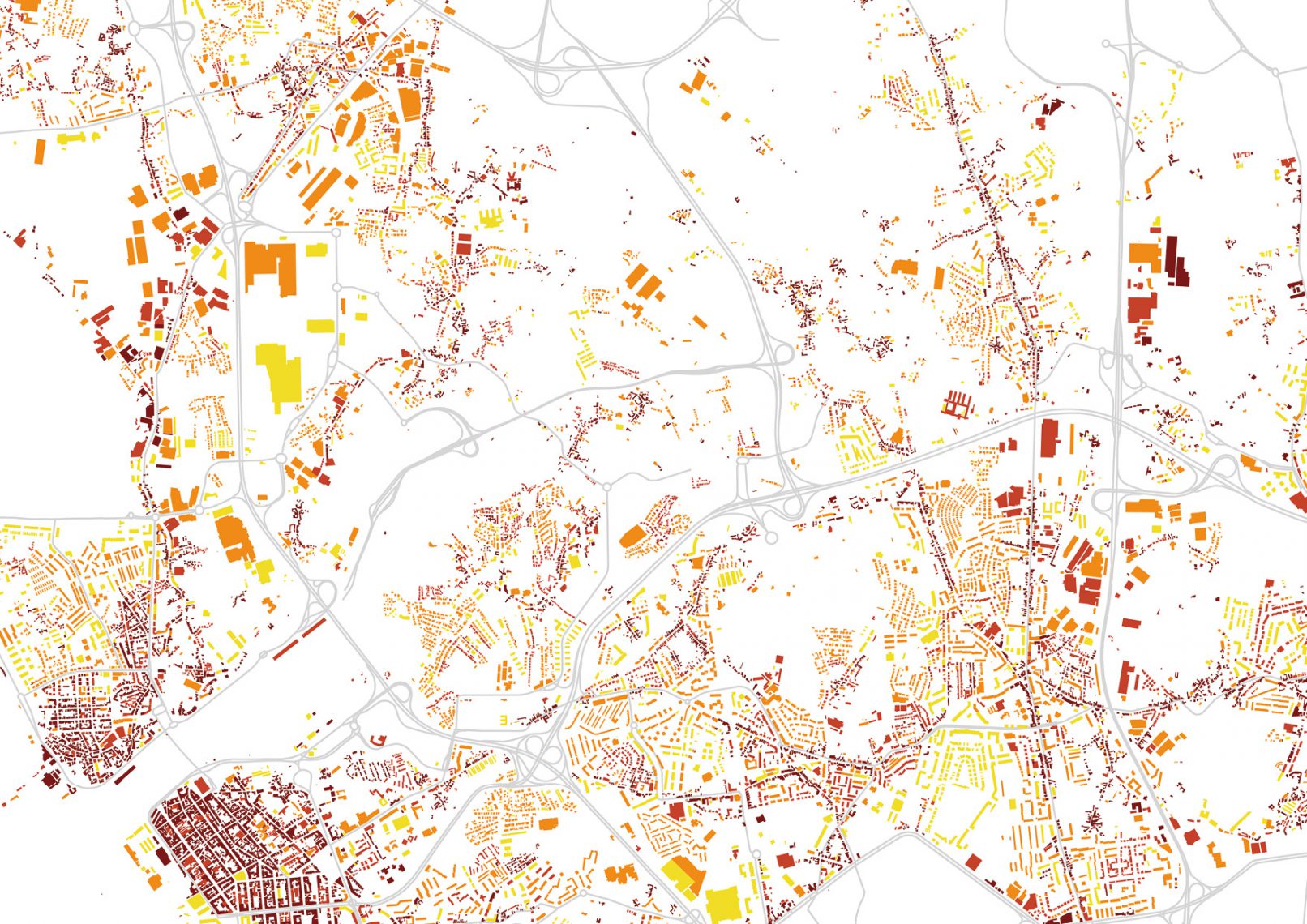Streets and roads have a fundamental and multiple role in contemporary urban areas, and are elementary spatial and social spaces. Their spaces are part of the main spatial structure of urban landscapes, serving for mobility and accessibility, social and economic activities, and are as well backbones for public and collective life. Streets and roads are resilient structures with a long-term effect on public and built spaces. As a network structure, their ´gross´ space is rigid. But, in their detailed design, streets and street networks, show a strong capacity to adapt to new uses and technological innovation.
Mobility and spatial planning are nowadays detached, besides the strong reciprocal process between mobility networks and urbanisation. In general, mobility infrastructure planning is sectorial organised – technically, juridically, financially and politically. The introducing of new road types, as motorways, also provoked paradoxes of infrastructure, as the creation of barriers (physically and socially), a car-dominated-design paradigm, a car-culture that excludes people, and infrastructural side effects such as environmental problems and traffic accidents. These are often frictions between various territorial scale levels (physical, governance).
The territory is stratified in systems, scale hierarchy and time layers. Transforming parts of it will also modify the urban landscape and its structure. This research is a reflection about this complexity in which various layers are interrelated. Each chapter of this research unfolds a different conceptual and scale level of the thematic of streets and urbanisation: (I) theory, urban evolution and transformation models; (II) practice, analysing the stratified and composed urban landscape at various scales through case – studies (area and type); (III) tool, a dualistic approach for street and road design, combining mobility and urban planning.
In the Porto region (case area), the mobility infrastructure network evolution developed into a complex and stratified system that gave structure to diverse urban patterns with compact and dispersed urbanisation. In this area, the Street-Road type (case type) is a hybrid urban (linear) entity – form and process – that is mainly situated at the intermediary level, in-between: towns and urban centres, national and local roads, spaces of mobility and urban spaces. Although, Street-Roads form an important part of the overall urban regional structure at various levels of territorial depth (road, street, urban and territorial section), they are as such not recognised in the actual planning system.
In the age of urban transformation, local physical and social characteristics are pre-dominant conditions for spatial transformations. A dualistic design approach should therefore be expected, both for mobility as for spatial planning.
